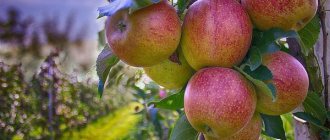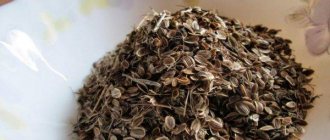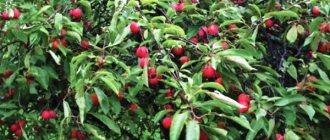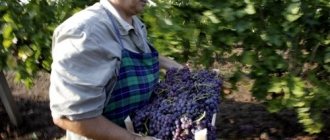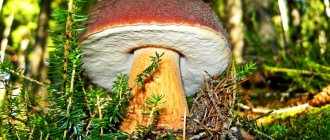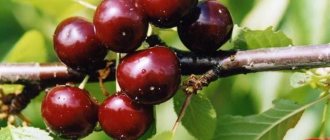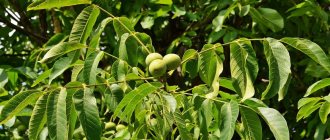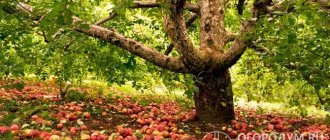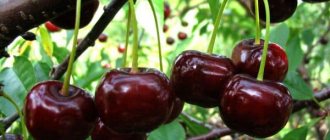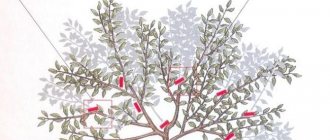When the cherry blossoms bloom
Cherry blossoms vary differently in different climatic regions. In the Black Earth Region, Krasnodar Territory, Stavropol and Volga regions, the first petals begin to bloom in early April. In Moscow, Leningrad region, Saratov, Samara, Bashkiria, Tatarstan, flowering begins in mid-April. In the northern regions: Siberia, the Far East, the Urals, Karelia, cherries bloom no earlier than the beginning - mid-May.
The onset of flowering is influenced by the average sub-zero temperature of the past winter, the thickness of the snow cover, autumn frosts and the saturation of frozen soil with water. If the snow has not yet fallen in the fall, the first frosts have struck, and there is not enough moisture in the soil, then the root system of the tree may burst. If there is enough water, then during frosts it expands in the soil, forms a protective crust of ice, under which the roots remain intact.
Changes in spring temperatures also negatively affect the vegetative function of trees. If the temperature rises above zero for a couple of days in March, the sun will begin to warm the tips of the branches, the tree will begin to “wake up” and activate bud growth. If, after warm days, sub-zero weather sets in again, the branches may freeze, the axils of the leaves will spray and will not bud in the subsequent warm weather.
In order for cherries to begin to bloom, but not bear fruit, an average daily ambient temperature of at least +10 ºС is sufficient. If the snow around the tree trunk has not yet melted, you need to clean a circle with a diameter of about 1 meter, heat 10-15 liters of water to a temperature of 35-37 degrees, and water the space under the trunk. It is important not to overheat the water and burn the tree roots. It’s easy to check the optimal temperature without a thermometer—you just need to dip your bare elbow in the water. If the water does not burn, but is not cold, then you can water the tree. After these manipulations, the watered soil is covered with black garden film so that the soil warms up even more from the sun's rays.
Note!
In unfavorable years, cherries may not bloom at all. In this case, there is no need to wait for the harvest.
If the cherry tree does not bloom in a certain year, then you need to determine the reason for this deviation. Mycotoxicosis, wood beetle damage, mineral imbalance in the nutritional composition of the soil, or severe frosts can cause a lack of flowering and fruit formation on the tree. If in winter rodents damage the bark around the trunk, the tree will either die completely or stop producing berries.
Popular varieties and their yields
Breeders are constantly working to invent new varieties and types of cherries. Among them there are very early, cold-resistant, with very large fruits, or sweet, but small. The buyer chooses according to his taste.
We will consider the most popular varieties of cherries below in more detail.
- Revna is a small tree that does not require special care. It bears very tasty fruits, can be easily transported over long distances, and can withstand frost and even frost. Average ripening period.
- Vasilisa is an excellent mid-season variety. It has very large berries, their weight sometimes reaches 15 g. They have good taste, bright, uniform color, and juicy pulp. The tree can produce crops for up to 20 years.
- Regina is a late variety. The berries are poured and ripened gradually, tasty, beautiful and appetizing to look at. It remarkably retains its integrity against fungi and garden pests, is not afraid of cold weather, and caring for a fruit tree is not difficult.
- Yellow - the berries take a long time to ripen, but tolerate cold very well. Delicious sunny-colored berries attract many people. The taste is practically no different from red ones, but savoring them gives you aesthetic pleasure.
- Ox's heart - the berries are large, burgundy, sweet. It produces an excellent harvest, resists frost, and is easily transported over long distances due to the strong skin of the berries.
- Large-fruited - very large fruits of a dark red color. The tree is small and easy to plant. Tolerates the cold calmly. The harvest feels calm during transportation.
- Cordia is distinguished by its remarkable taste, large (up to 10 g) berries, and their late ripening. You can make preparations for the winter from them. The fruits are well preserved, they can be transported over long distances, they do not rot or burst. No matter how much you transport them, they will remain intact and end up with a happy consumer.
Alternative varieties
In addition to those described above, there are other, no less popular varieties that deserve the attention of every gardener.
- Tyutchevka is a tree with a wide crown and powerful branches. Late variety. Begins to produce the first fruits in the 3rd or 4th year. Medium sized berries. Excellent taste, aroma and presentation. It is easy to transport and sell this berry due to its excellent durability and transportability.
- Italian is a self-fertile tree, which is quite rare among cherries. An early variety, they ripen quickly and take all the laurels of the first ripe berries in the new season. The berries are large. Not afraid of frost, viral and fungal diseases.
- Fatezh is a crop with large berries (weighing up to 6 g each); you can harvest up to 50 kg of berries from one tree per season. Sweet cherries have a bright taste; the seed is easily removed from the berry. The tree first begins to bear fruit after 3-4 years of life. It tolerates cold and transportation well; cherries are resistant to many strains of bacteria and fungi.
- Leningradskaya black - the tree begins to bear fruit after the 3rd year of growth in a permanent place with proper care from the gardener. Excellent taste and color of the berries, they are large and appetizing, bright burgundy in color. The pulp is juicy, sweet, there is a slight bitterness combined with the amazing aroma of ripe cherries. You can make compotes and jams from this type of cherry; they will not spoil or explode. Black cherries do not require special care or special conditions for growth.
- Bakhor bears fruit every year without interruption. Withstands frost and disease. The harvest can be easily sold and not be afraid that it will burst or leak. You can roll up compotes and jams. It is easy to remove the pit from the pulp.
Fatezh - tolerates cold well and produces a large harvest
What year do cherries bloom after planting?
The onset of flowering time depends greatly on the variety. Some types of cherries begin to bloom in the second year after planting, while others show their first flowers only in the 10th year of life. Late-ripening varieties can form bulbs in the axils of the leaves in the spring at 6-8 years of age, which in essence are not buds. Then for a year or two this phenomenon disappears. And only with the next activation of the vegetative system does real flowering begin. This phenomenon is called false axils and is characteristic of many plants of the rose family.
What year do cherries bear fruit after planting?
The first two years after planting, cherries are just beginning to form and strengthen the root system, so fruiting is not possible during this period. Even if the tree blooms, there will be no fruit anyway, since all the nutrients are aimed at strengthening and rooting the roots.
Cherries begin to bear fruit after planting at 3-5 years, in some cases at 9-11. The timing of ripening is affected not only by the temperature and climate of the area where the tree grows, but also by its variety. Even in the Krasnodar region, late-ripening cherries ripen at 6-8 years of age, exactly the same as if they were planted in Siberia. If you need large, juicy berries, then it is better to choose late-ripening varieties that are characterized by high yield. If you need berries as quickly as possible, then it is better to give preference to early varieties, the fruits of which are smaller and more sour.
Interesting fact!
Those varieties of cherries that ripen at 10-11 years of age are distinguished by unusually high yields - up to 120 kg of berries can be harvested from one bush per season. Such fruits are not suitable for drying, as they are oversaturated with juice.
When cherries ripen, it is important to properly feed them with organic fertilizers, since the plant directs all the beneficial substances into the fruits; agronomists call this process “giving back to itself.” Fertilizer application will not increase the amount of harvest, but will help improve their taste.
Landing dates
Depending on the region, cherries can be planted in spring and autumn. It is important that this happens during the plant’s rest period. In the south, seedlings are planted in the fall in September-October, the main thing is that rooting occurs before the first frost. In the northern regions in the spring before the onset of kidney swelling. It is important to create an adaptation period before the onset of heat.
What to do if cherries do not bear fruit
Cherry is an unpretentious and persistent plant that has the longest fruiting period among fruit trees - up to 100 years. There are several reasons why cherries may not bear fruit. They are divided into endogenous and exogenous. Internal causes are abnormalities in the development of seedlings and nutritional problems (lack of nutrients in the soil). External causes - damage by parasites, fungal and infectious diseases, unfavorable temperature and excess/lack of water.
The preparation period for flowering has not passed
If the seedling is still young or recently planted in the ground, then you should not wait too long for the fruits to form. Also, late-ripening varieties are dormant for 5 to 10 years, so it is important to clarify the agronomic characteristics of the seedling before purchasing and ask for accompanying documents indicating the variety, date of removal from the ground and parental individuals.
The seller can deceive and exaggerate the age of the seedling, and also pass off a hybrid plant as a pure line. In the best case, the fruiting period will increase by a year to a year and a half, and in the worst case, the plant will not produce fruit at all, since the grafting of antagonist varieties produces sterile F1 hybrids.
Unfavorable landing site
Cherry does not like northern shaded places on the site, marshy soil and drafts. Before choosing a place for a bole, you need to find out the wind rose, the dominant directions on the site, take into account insolation and the average daily lighting time. Cherries are planted on the southern or southeastern front, a place protected from winds and marshy soil.
Care for better fruiting
If a cherry tree does not bear fruit for a long time, it requires more attention from the gardener. If you follow all the rules for planting and caring, you can grow a tree that will delight you with tasty and juicy fruits every year. It is worth paying attention to the care recommendations.
Watering is carried out at intervals of 14 days. Excess moisture leads to the fact that the roots of the plant begin to rot. As a result, the tree ceases to function normally (the number of ovaries and shoots decreases), which affects the timing of fruiting.
A few days before watering, it is recommended to apply fertilizer to the soil. Preference should be given to combined fertilizers. For the first time, you can feed the crop with organic substances. For this, humus is used (calculated at 2 kg per 1 m2). The second time, feeding is carried out using a solution of superphosphate (50 g per 10 l of water) or ammonium nitrate (30 g per 10 l of water).
For maximum yield, the crowns are often watered with a honey solution. Bees flock to the sweet taste and pollinate the plant.
To avoid invasion of parasites and diseases, it is advisable to spray the crop with a solution of urea (30 g per 10 l of water) or copper sulfate (10 g per 10 l of water).
During care, it is recommended to pay attention to the place where the cherry is grown, its appearance and climatic conditions. In hot regions of the country, watering is carried out much more often as the soil dries out, and fertilizing should be lighter. At such moments, the same solutions are used, only their concentration should be 2 times less.
Pests that attack cherries
Most often, the brown fruit mite settles on cherry leaves. It can be seen with a magnifying glass or magnifying glass. Its length is 0.5 mm; color ranges from pale brown to rich red. Lays round red eggs mainly on young bark, which causes red or rusty stripes to appear on the branches. When hatching, the larvae begin to feed on the juice of flowers and stalks. With extensive mite infestation, the leaves of the cherry tree begin to fall off and the growth of new branches stops. During a season, five generations of the pest can change.
Another small sucking insect that attacks cherries is the cherry aphid. It is larger than a tick, body length is about 3 mm, the surface of the back is shiny. They drink the juice from the young leaves, which causes them to curl and become pale yellow in color. Peak reproduction of aphids occurs in June - July. During these months, you need to regularly inspect the leaves and carry out preventive dressings.
The cherry tubeweevil is also called the weevil. This is a beetle up to 1 cm long, green in color with a golden tint. They emerge from hibernation during cherry blossoms and feed on bulbs, ovaries, branches, and buds. They often gnaw out the center of young leaves, disfiguring the overall appearance of the cherry tree. The larvae lay on the berries; in the adult stage, the weevils bite into the seed, causing the berry to dry out and fall off.
Prevention
In order to prevent parasitic insects and mycotoxicoses, cherries are treated with insectoacaricidal solutions. It is better to choose multidisciplinary products that combine poisons against several types of pests at once. To destroy adult insects and pupae of insects that overwinter in the soil, you can pour 20-30 liters of boiling water over the area under the tree in winter, 10 cm away from the trunk. Hot water will not have time to burn the roots lying deep in the ground, but will scald insects lying on the surface.
To prevent fungi from infecting the trunk and root system, you need to monitor the moisture in the soil adjacent to the tree. Too wet soil can be sprinkled with sand or a special coagulant can be added - an adsorbent that will absorb excess water. In winter or early spring, tree trunks are whitened with a steep solution of quicklime to a height of 0.5-0.7 meters from the ground. The darker the place where the cherry tree grows, the higher the limestone column.
Proper care to increase yield
In order for cherries to produce a lot of berries, you need to properly care for the tree. In autumn, fallen leaves under the trunk are removed. If green manure has been planted, dig it shallowly into the ground. In case of severe frosts without snow, cover the crown and lower part of the trunk with covering material. In early spring, the top of the cherry tree is treated from pests and urea-based fertilizers are applied. They also spill the root part with warm water and cover the ground with a thick black film. Before flowering begins, the tree is sprayed with Bordeaux mixture. Mixed fertilizers of potassium and phosphorus are applied twice. During the entire fruiting period, the trunk, branches, leaves and fruits are inspected for insect parasitism and fungal damage.
Advice!
In winter, bright red ribbons are tied to tree trunks to scare away hares and other rodents.
In autumn or late summer, the branches are trimmed, removing old and tall shoots. It is better to form a round rather than oval crown. Cover the cherry trunk with lime and fumigate it with the smoke of smoldering spruce paws. Experienced gardeners try to avoid the proximity of cherries, plums and sweet cherries, since these trees have many of the same parasites. If the cherry tree froze during the autumn frosts and burst wounds appeared on the bark, they are covered with wood mastic or garden glue. The area where the ointment is applied can be covered with fallen leaves or a bunch of straw.
The year in which cherries bear fruit after planting depends on the region where the tree is planted, the ripening period of the variety and external factors. Late-ripening varieties produce the first berries at 6-11 years. Early ripening varieties can begin to bear fruit 2-3 seasons after planting. Early varieties produce small fruits with a sour taste. Late varieties are distinguished by their large berry size, high yield per seedling, and sweet fruits. Poor soil condition, the wrong location and parasites can delay fruiting or stop it altogether. Proper care can speed up the flowering process of cherries, which means the berries will come earlier. Excessive crown density negatively affects the quantity and quality of berries.
Proper care of cherries
In order for cherries to enjoy a good and tasty harvest, they need care. They need a sunny place without drafts, properly fertilized soil. The basis of care is proper planting, timely watering, digging, fertilizing, pest control and pruning.
Watering and fertilizing
Cherry is a moisture-loving plant. Active, deep watering is applied to it - the moisture should reach the location of the main mass of roots ~ 40cm. Watering is required in June - this is the period of tree and fruit growth, during severe drought, in the fall before cold weather, no more than once a week. During fruit ripening, cherries are not watered to prevent cracking of the berries. Watering also stops in the 3rd decade of July and August, so as not to delay the growth of shoots.
In order for the cherry tree to withstand the freezing of moisture from the crown and not freeze in windy and frosty weather, it is necessary to remember about autumn watering.
Whether feeding is necessary or not is decided individually depending on the appearance of the tree and the condition of the soil. Cherries in the fourth year and older can be fed in the 1st decade of May with the following composition: superphosphate, potassium sulfate, urea, 20 g of each per 1 sq. m. m. After harvesting, foliar fertilizing with mineral fertilizers is carried out and organic fertilizers are added.
Crown formation and pruning in two stages
A mandatory step in caring for cherries is pruning. With its help, a tiered crown is formed that can withstand the mass of a huge harvest. The pruning process should begin with the formation of a skeleton of the correct shape. It is held from 1st to 5th year. Gradually forming several tiers:
- In the first year, the height of the trunk is adjusted: it is measured to 60 cm, 4-6 buds are counted up, and a cut is made.
- In the second spring, the base of the first tier is formed. They will be 3-4 shoots located in different directions from the central trunk, and this is done by pruning them leaving 0.5 m. The trunk is measured 70 cm long from this mark, counted up to 6 buds, the rest is cut off.
- In the third spring, branches growing inside the crown or vertically are removed. The second tier is formed and their length is adjusted. It should be up to 15 cm shorter than the branches of the 1st tier and 20 cm below the main trunk. It is measured from the beginning of the second tier at 0.5 m and cut off behind the 6th bud.
- In the fourth spring, the formation of the first two tiers is completed; if higher branches appear on the tree, then the third tier is formed. To do this, cut branches to 20 cm less than the length of the central trunk.
- In the fifth spring, work on the formation of cherries is completed - they bear fruit.
Pruning cherries in two stages
Summer pruning is carried out in 2 stages. The first after flowering, but before fruiting. To provoke the growth of new horizontal branches, young shoots growing in the wrong direction are shortened. The second stage occurs at the end of fruit harvesting. It involves removing weak, broken, misdirected branches.
Harvesting and subsequent care of cherries
Harvesting begins as the berries ripen. They can be collected in several ways - by cutting the berries with scissors along with part of the cuttings, or by picking them by hand with or without cuttings. For safety, devices are used on a telescopic handle; they can be collet with a grip or wire, pneumatic fruit pickers, and a tulip fruit picker.
When the fruits are collected, the trees are treated with insecticides and fungicides or Bordeaux mixture. Pruning and fertilizing with organic and mineral fertilizers are carried out.
